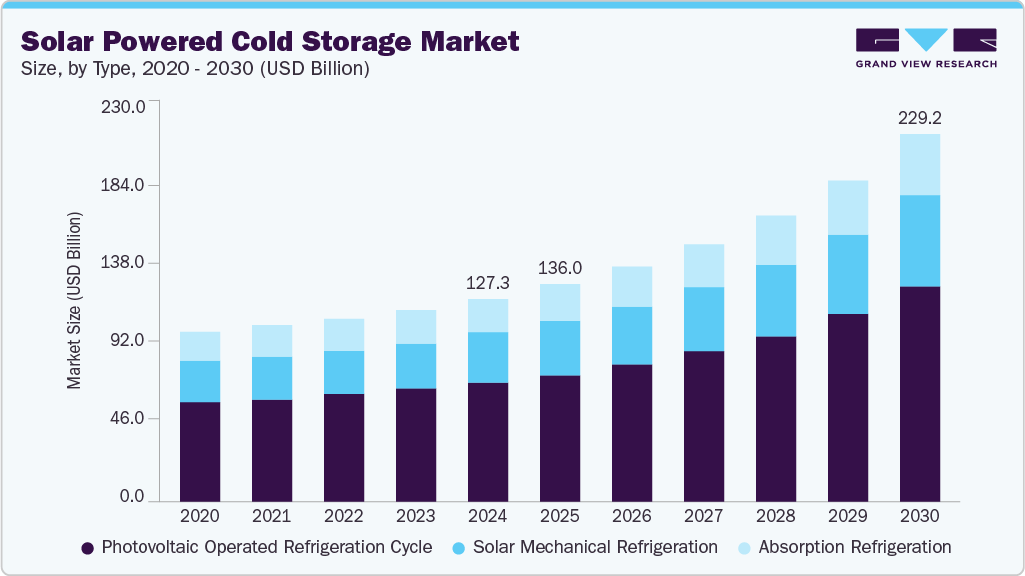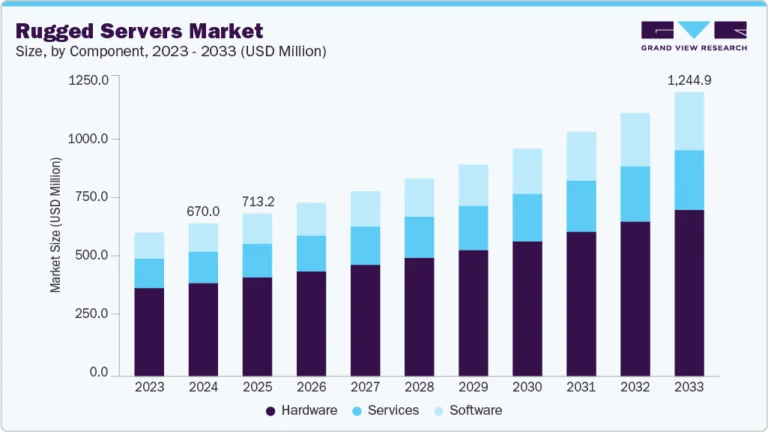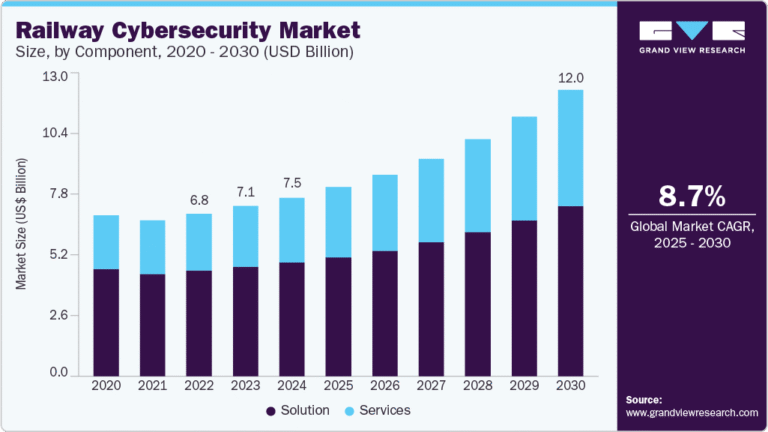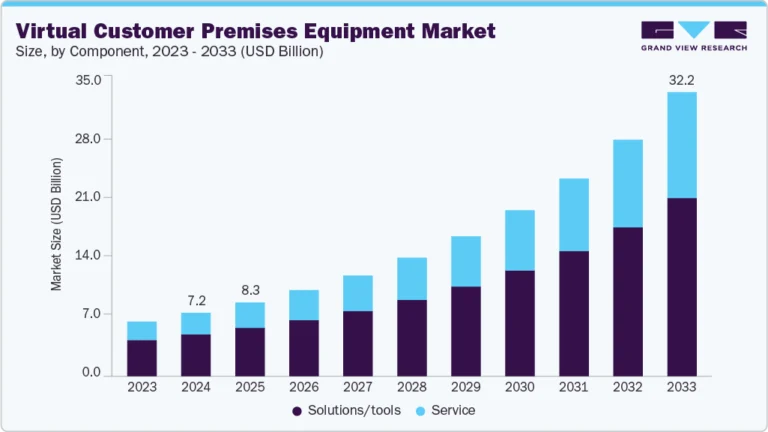Solar Powered Cold Storage Market Size, Share & Trends Analysis growing at a CAGR of 11.0% from 2025 to 2030

The global solar powered cold storage market size was estimated at USD 127.30 billion in 2024 and is projected to reach USD 229.22 billion by 2030, growing at a CAGR of 11.0% from 2025 to 2030. The increasing emphasis on reducing food loss, particularly in the agricultural sector, is a key factor driving market adoption.
Key Market Trends & Insights
- The Asia Pacific solar powered cold storage industry is anticipated to grow at a CAGR of 11.3% during the forecast period.
- The Asia Pacific solar powered cold storage industry is anticipated to grow at a CAGR of 11.3% during the forecast period.
- By type, the photovoltaic operated refrigeration cycle segment accounted for the largest share of 58.6% in 2024.
- By industry, the horticulture/floriculture industry segment held the largest market share of 46.4% in 2024.
Market Size & Forecast
- 2024 Market Size: USD 127.30 Billion
- 2030 Projected Market Size: USD 229.22 Billion
- CAGR (2025-2030): 11.0%
- Asia Pacific: Largest market in 2024
- MEA: Fastest growing market
Request a free sample copy or view report summary: https://www.grandviewresearch.com/industry-analysis/solar-powered-cold-storage-market-report/request/rs1
In developing regions where electricity infrastructure is unreliable or lacking, solar-powered cold storage provides a viable solution to preserve perishable goods. Additionally, the rising need for temperature-sensitive storage for vaccines and pharmaceuticals, especially in remote areas, has further fueled demand. As climate change progresses and energy costs increase, industries are actively seeking cleaner alternatives to traditional diesel- or grid-powered cold chains. Technological advancements are shaping the future of the solar-powered cold storage industry. Innovations in solar panel efficiency, battery storage systems, and thermal insulation materials have greatly improved the performance and reliability of solar-powered refrigeration units. The integration of IoT-enabled monitoring systems enables remote temperature control and fault diagnostics, enhancing asset reliability and product safety. Emerging technologies such as solar thermal refrigeration and phase change material (PCM) cooling are being explored to optimize energy usage. Modular, plug-and-play cold storage solutions are also gaining traction for their portability and ease of deployment in off-grid or disaster-prone areas.






